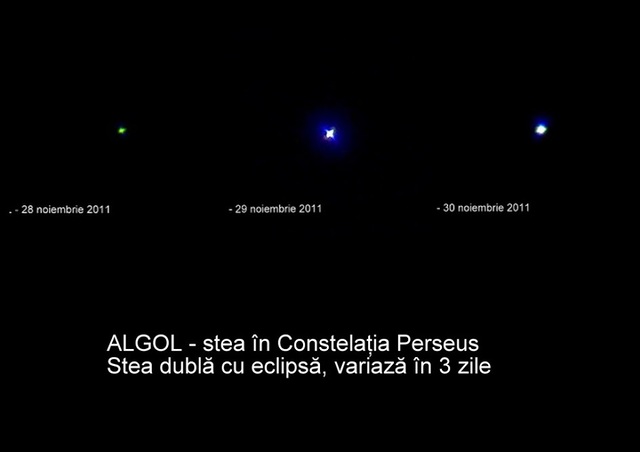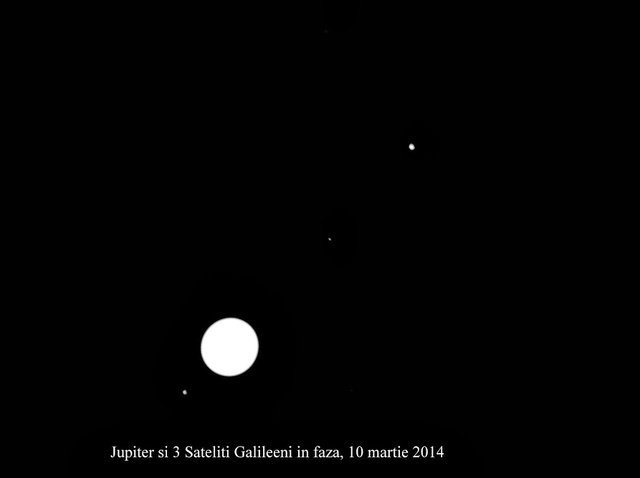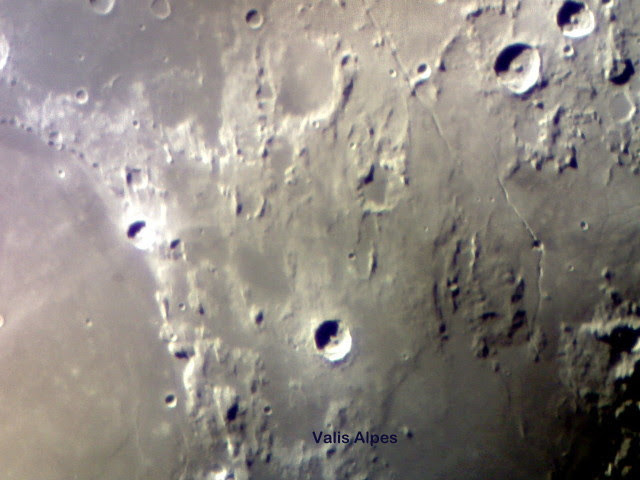HEAVENLY BODIES AT
THE NATIONAL CHILDREN’S PALACE
OBSERVATORY
Text and photos Andrei Dorian Gheorghe
Special guest astrophotographer Minodora Carmen Lipcanu
Design Florin Alexandru Stancu
I have the privilege to live since 1984 in an apartment including
the south-western vision of a façade of the National Children’s Palace
(conceived in 1984, inaugurated in 1986 and placed in the Children’s World Park,
a prolongation of the Youth Park in Bucharest),
which contains the terrace with the cupola of an astronomical observatory.
Using this chance,
I made hundreds of photos with the “children’s observatory”
(especially during the winter time, when the trees lose their leafs)
and its celestial friends (especially sunsets),
which were solutions “on duty” for when
I needed astronomical symbols for our on-line projects.
I made a few such photos in the beginning of 2019,
a year when I celebrated a small jubilee,
35 years since this observatory was conceived,
which made me try another project (this one!) dedicated to it.
I also transformed a few of these photos
into astro-haiga, which I published
in the Astropoetry Blog of the Astronomers Without Borders,
such as the sample from bellow (but I used bigger dimensions over here)
in 2018.
 800.jpg)
I always had good relations with the coordinators of
the astronomy circle of the National Children’s Palace.
The first of them was Dr. Gheorghe Vass,
an eminent professional astronomer (now his name is carried by an asteroid),
who gave for a while the scientific research for the educational field.
The second coordinator was a dedicated teacher, Mariana Tulbure,
who used to participate with her students at SARM’s Perseid national events
in 1993-1999.
The third coordinator was teacher Adrian Pruna, who,
together with Dragos Brasov (president of the Urania Astronomical Association),
began to celebrate the International Astronomy Day over here
(later, Adrian Pruna was an astro-actor in the astropoetry show
which SARM and friends gave at the 2010 International Meteor Conference -
Armagh, Northern Ireland, UK).
The current coordinator, Dr. Minodora Carmen Lipcanu,
organized annually national contests of astrophotography and astroart
for Romanian teenagers in the 2010s
and is a passionate astrophotographer.
Looking through her personal astrophotography gallery,
for which he used the telescope of the observatory,
I chose four symbolic pictures representing:
the Sun (a group of sunspots),
a star (Algol of Perseus),
a planet (Jupiter and satellites)
and the Moon (details, with Valis Alpis).



This stimulated me to try to photograph similar heavenly bodies
from the outside of the observatory (but including its cupola) in 2019.
In this respect, on the afternoon of 2019-12-08
I began a veritable expedition,
with the sunset near the observatory and the moonrise on the opposite side.
Then I followed the Moon
until I arrived at the Dambovita River,
and I returned to the observatory through the fascinating colors of the dusk,
until I saw the Moon right in the top of a Christmas Tree.
Then I caught a star (Vega of Lyre) up on the right of the cupola
and a planet (Venus) down on the left of the cupola.
Returned home, from my balcony
I caught the Moon again,
a source of light pollution (the city was decorated for Holidays)
and the star Sirius (of Canis Major) among the tree branches
(in the centre of the image),
all of them over the Children’s World Park.
On the morning of 2019-12-16, also from my balcony,
I tried to catch the Morning Moon over the observatory cupola,
a difficult mission taking into consideration
the artificial lights and the tree branches which still had leafs.
Then I continued to photograph the morning twilight, the sunrise,
the Sun at noon, the sunset, the evening twilight,
Venus among tree branches,
and I made a modest tentative to catch more stars of the Winter Hexagon
(including Orion and the Winter Triangle).
The astronomical phenomenon of 2019 visible in Romania
was the transit of the planet Mercury across the Sun’s disk (November 11th).
On this occasion I had the honor
to visit the children’s observatory again after a few years,
to remark children and parents with telescopes on its terrace,
and to see teacher Minodora Carmen Lipcanu at work with the main telescope,
observing the transit and educating children.
In 2019-12-19 I wanted to see clearer the Morning Moon
in the same picture with the observatory cupola.
Then I walked through the surroundings to see the sunrise
and its reflection also on the observatory cupola.
Then, until the end of the year, when the weather was favorable,
I tried a few other photo-series from the comfort of my balcony:
sunsets over the children’s observatory, solar visions over the park
and even the symbolic Solstice Sunrise on 22 December.
I continued in the same manner,
and on 31 December I had the surprise to see
the Sun deformed by altocumulus clouds,
close to the observatory.
But the best day was 28 December:
strange clouds, a beautiful sunset…
The next step was the Evening Moon’s Sickle in Venus’ Belt.
over the “stars” of the Holidays, among the tree branches.
The last step was the hardest one, with supplementary difficulties:
-the Moon Sickle under a street lamp (1, on the left)
and the silhouette of the children’s observatory (on the right)
almost covered by another… quite aggressive street lamp (2),
in the first picture;
-the Moon Sickle, Venus (even closer to street lamp 1) and the observatory
in the second picture.
Among them, a new astroproverb of mine.
You can find almost everything
Using the current marketing.
But a telescopic story...
Just at the observatory!
*
© 2019 SARM
(Romanian Society for Meteors and Astronomy)